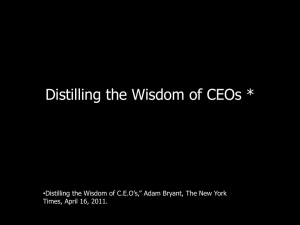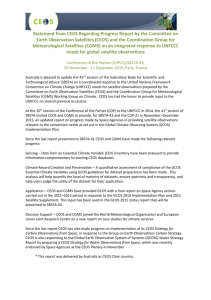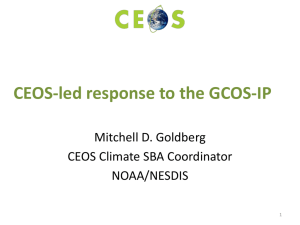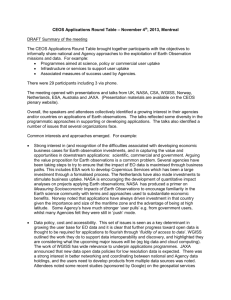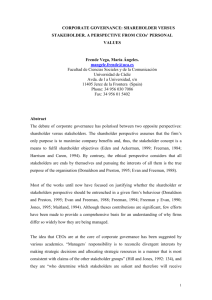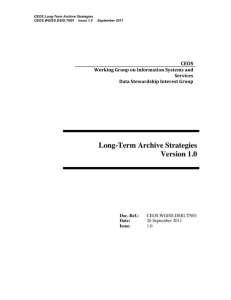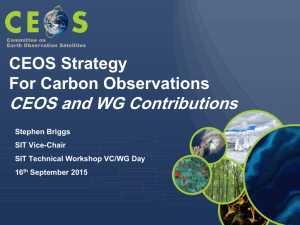Established in 1984, the Committee on Earth Observation Satellites
advertisement
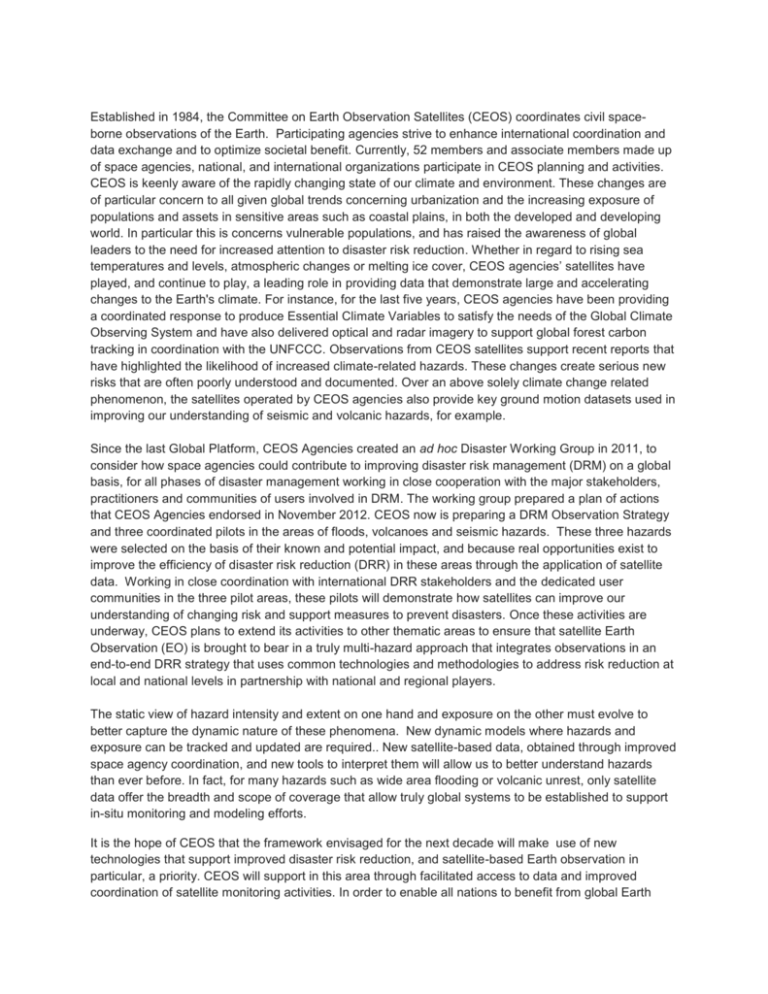
Established in 1984, the Committee on Earth Observation Satellites (CEOS) coordinates civil spaceborne observations of the Earth. Participating agencies strive to enhance international coordination and data exchange and to optimize societal benefit. Currently, 52 members and associate members made up of space agencies, national, and international organizations participate in CEOS planning and activities. CEOS is keenly aware of the rapidly changing state of our climate and environment. These changes are of particular concern to all given global trends concerning urbanization and the increasing exposure of populations and assets in sensitive areas such as coastal plains, in both the developed and developing world. In particular this is concerns vulnerable populations, and has raised the awareness of global leaders to the need for increased attention to disaster risk reduction. Whether in regard to rising sea temperatures and levels, atmospheric changes or melting ice cover, CEOS agencies’ satellites have played, and continue to play, a leading role in providing data that demonstrate large and accelerating changes to the Earth's climate. For instance, for the last five years, CEOS agencies have been providing a coordinated response to produce Essential Climate Variables to satisfy the needs of the Global Climate Observing System and have also delivered optical and radar imagery to support global forest carbon tracking in coordination with the UNFCCC. Observations from CEOS satellites support recent reports that have highlighted the likelihood of increased climate-related hazards. These changes create serious new risks that are often poorly understood and documented. Over an above solely climate change related phenomenon, the satellites operated by CEOS agencies also provide key ground motion datasets used in improving our understanding of seismic and volcanic hazards, for example. Since the last Global Platform, CEOS Agencies created an ad hoc Disaster Working Group in 2011, to consider how space agencies could contribute to improving disaster risk management (DRM) on a global basis, for all phases of disaster management working in close cooperation with the major stakeholders, practitioners and communities of users involved in DRM. The working group prepared a plan of actions that CEOS Agencies endorsed in November 2012. CEOS now is preparing a DRM Observation Strategy and three coordinated pilots in the areas of floods, volcanoes and seismic hazards. These three hazards were selected on the basis of their known and potential impact, and because real opportunities exist to improve the efficiency of disaster risk reduction (DRR) in these areas through the application of satellite data. Working in close coordination with international DRR stakeholders and the dedicated user communities in the three pilot areas, these pilots will demonstrate how satellites can improve our understanding of changing risk and support measures to prevent disasters. Once these activities are underway, CEOS plans to extend its activities to other thematic areas to ensure that satellite Earth Observation (EO) is brought to bear in a truly multi-hazard approach that integrates observations in an end-to-end DRR strategy that uses common technologies and methodologies to address risk reduction at local and national levels in partnership with national and regional players. The static view of hazard intensity and extent on one hand and exposure on the other must evolve to better capture the dynamic nature of these phenomena. New dynamic models where hazards and exposure can be tracked and updated are required.. New satellite-based data, obtained through improved space agency coordination, and new tools to interpret them will allow us to better understand hazards than ever before. In fact, for many hazards such as wide area flooding or volcanic unrest, only satellite data offer the breadth and scope of coverage that allow truly global systems to be established to support in-situ monitoring and modeling efforts. It is the hope of CEOS that the framework envisaged for the next decade will make use of new technologies that support improved disaster risk reduction, and satellite-based Earth observation in particular, a priority. CEOS will support in this area through facilitated access to data and improved coordination of satellite monitoring activities. In order to enable all nations to benefit from global Earth observations, UNISDR and other major DRR stakeholders have a critical role to play in supporting and fostering capacity building and knowledge sharing relating to satellite EO data access and use.

